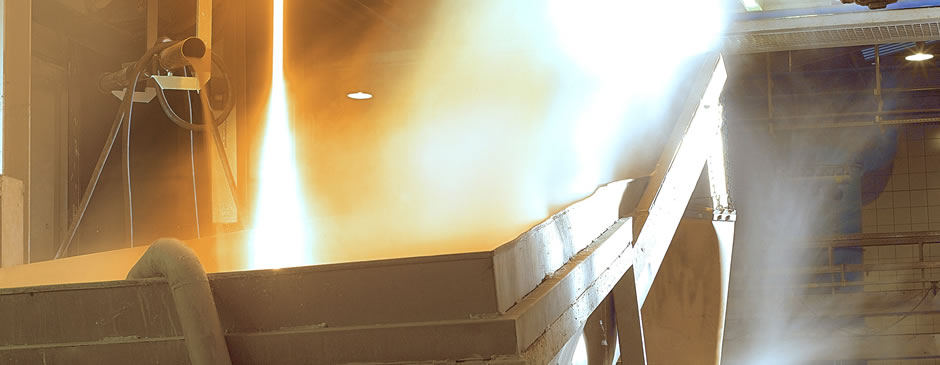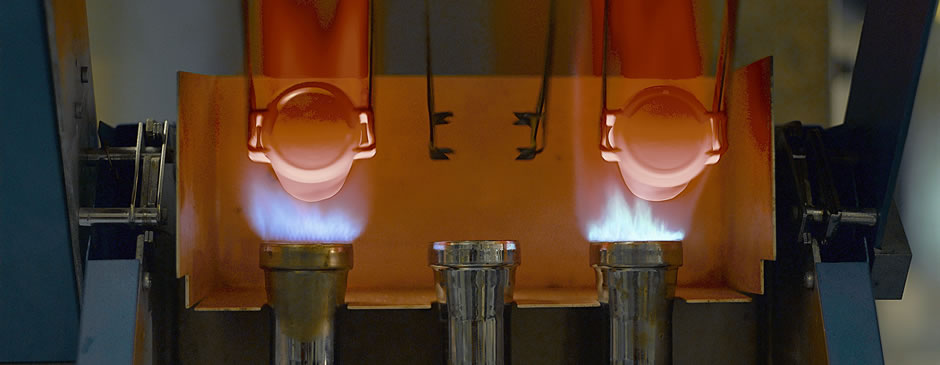History of the Association
The first years
ANFFECC was born on the 15th November 1977, as a result of the Spanish Association Law, published that year. A group of entrepreneurs dedicated to the production of ceramic frits, glazes and pigments decided to create a new entity in order to defend their needs and common interests.
19 enterprises formed part of ANFFECC in its initial constitution. Some of them, such as Spinelcolor or Silika have disappeared, and other, as Zircolor, Gaya Figueroa and Fancialluci Ibérica have merged into one (Johnson Matthey, actually Endeka Ceramics). In spite of these changes, most of these firms are still producing right now.
The main issues in the first years where the negotiation of the Collective Agreements (right now, ANFFECC follows the Collective Agreement of the Spanish Chemical Industry), the labelling of the products, and the relationship with other associations.
The 80’s
ANFFECC grows up
In the 80’s, ANFFECC entered the Spanish Chemical Industry Federation (FEIQUE), the Castellón Enterprise Confederation (CEC) and the Ceramic Industry Investigation Association (AICE) and begins to contact the Ceramic & Glass Spanish Society. The first informative brochure of the association, with the names of the enterprises, also appears these years.
One of the most important items of this decade was the agreement signed between ANFFECC and Enagas for the Natural Gas supply, which supposed a fundamental change in the furnace combustion methods, changing from fuel-oil to natural gas.
Other issue that ANFFECC firmly supported was the implementation of superior studies regarding the needs of the ceramic industry, such as the Chemistry and Engineering degrees, and the creation and development of the Jaume I University in Castellón.
The 90’s
Technical specialization and environmental issues
The interest of the association members in international environmental issues began to appear and experts of the enterprises created a Technical Committee to study all these aspects.
ANFFECC also began its contact with other European associations of the same sector, such as Ceramicolor (Italia), VdMI (Alemania) and Epsom (Francia), among others. In these meetings the associations took joint decisions in order to protect the sector interests in the EU. In 1998 the SHOCS -a guide for correct use and manipulation of the most common raw materials- was published. ANFFECC also participated in the IPTS (Institute for Prospective Technological Studies) meeting regarding the Glass Bref development.
Other items that ANFFECC was involved in during these years are related to communication and new technologies. Internet allowed a more flexible, constant and quick communication with the associated enterprises. Also, the agreements with supply companies, together with other ceramic industry associations such as Ascer and Asebec, reduced costs in natural gas, telephone, electric power, etc.
THE XXI CENTURY
International expansion, crisis and ceramic inkjet revolution
The change to the XXI century supposed for many ANFFECC associated companies an important flourishing. Their bet on internationalization made them open borders and start their establishment in other countries, not only with commercial channels but also with productive plants. Moreover, the rise of R+D+I investments made the innovation of the sector rise to the top. Tile companies from all over the world recognized the Spanish ceramic frits industry as the best in quality, design, innovation, expansion and client service. Besides, the rise of the Spanish building sector propitiated an important rise in sells and production. However, the margin of some of the products began to fall due to the rise of the prices of the raw materials (which suppose and important percentage of the price of the product). Together with that, the environmental investments went high as well. Within an ambitious sector plan, the companies installed filters in all the companies, to increase the environmental protection and respect.
Parallel to this, ANFFECC developed different investigation and working lines to define, among others, the Best Available Techniques (BAT’s), towards the Glass Bref, or the ambitious Ceramic Frits Classification Study, presented in the EU, towards the REACH European Chemical legislation. This study declared that frits are a substance in itself and that 95% of the frits are not dangerous neither for the environment nor for the human health, since they are a vitreous inert material. ANFFECC also participated in other important environmental issues and regulations such as Emissions Trade Scheme, EPER substance labelling and classification, emissions studies, Glass and Chemical Inorganic Specialities Brefs, etc.
Also the institutional relations became closer. ANFFECC was actively involved in meetings with the Environment and Industry Spanish Ministries, and also with the regional Governement (Conselleria), to clarify key issues for the sector. In fact, it was one of the first industries in signing a Voluntary Agreement with the Environment Regional Government, in order to unify criteria towards the Integrated Environmental Authorizations for the companies. Also, the sector was named as energetic efficiency pioneer by both the Industry Ministry and the Regional Environmental Governement, in their air quality studies. ANFFECC also participated in the IMPIVA Competitiveness Plans, with different projects, and raised the international activity thanks to the creation, of the Ceramic Pigments Consortium in 2008, followed by the Frit Consortium in 2009. These entities, born to facilitate the analysis and registration of these substances in REACH, were the first to be created in Spain. They have developed themselves and become larger, opening their scoop to the study of other chemicals regulations outside the EU.
Towards the end of this first decade, the national and international economic crisis critically hit the Spanish ceramic sector, and consequently the frits sector, which was able to resist thanks to the export sales. Some of the companies had to close, but most of them resisted and continued their bet for innovation. Thanks to that, and in the middle of the crisis, a new product was born that supposed a world-wide revolution in the ceramic industry: the ceramic inks for digital ink.jet printing. The synergy between the Spanish machinery companies and the frits and colours industry provided a new way of colouring the tiles that saves time and money and allows new decorating possibilities never seen before. The quick expansion of this product made the industry refloat in spite of the crisis and the sector could keep growing, thanks to the exports to china, Italy, Egypt, Russia, North Africa, etc.
Now, the Spanish frits, glazes and ceramic colours producers maintain their bet for Research, Development and Innovation. They have increased their commercial and productive activity in the international spectrum, and keep their production and investigation bases in Spain, in spite of the rise of the energetic costs.
Address: C/ Enmedio, 116,1º Dcha.
12001 Castellón, Spain
Tel: (+34) 964 20 53 72
Email:
Copyright 2025 © Anffecc · All rights reserved · Legal notice

